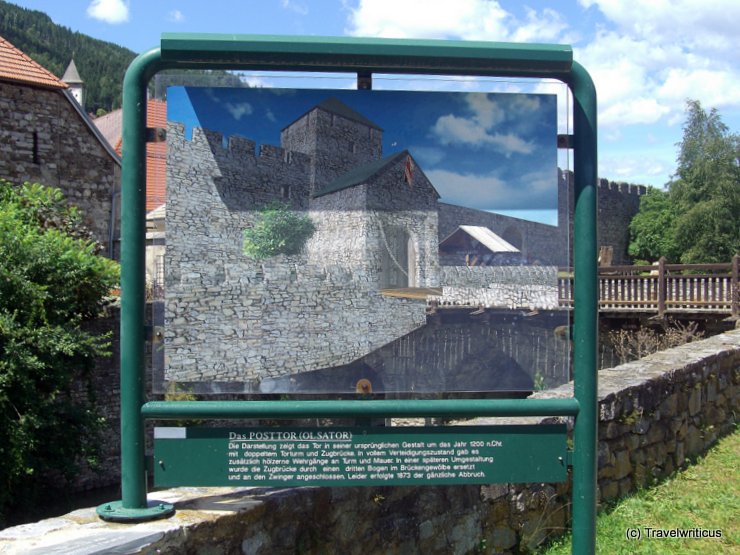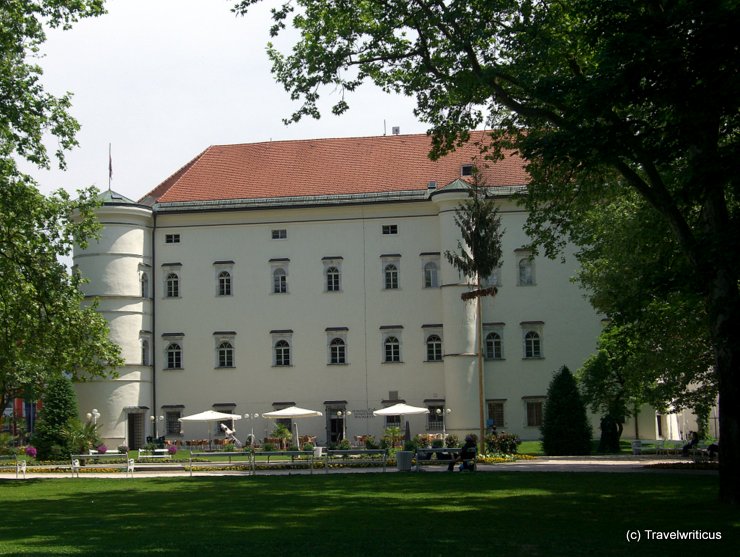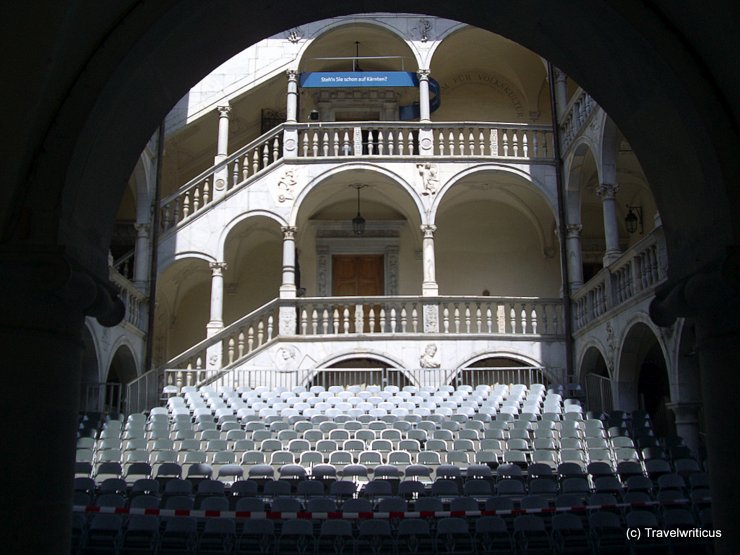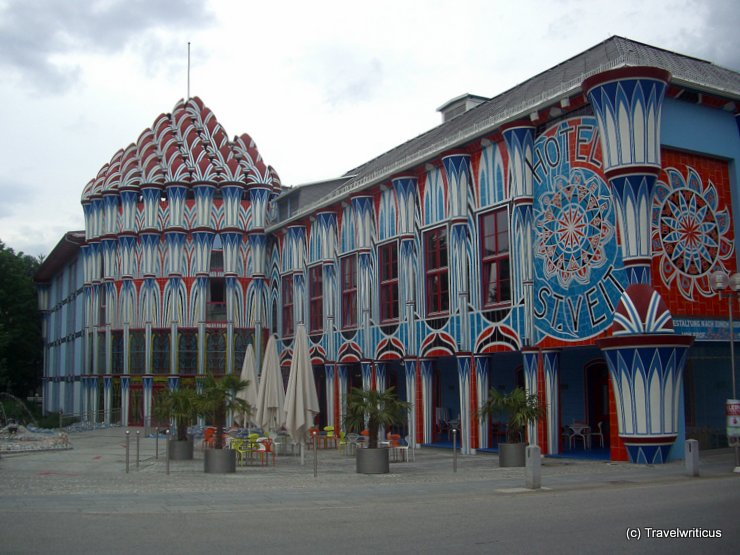
On my walk through Friesach, I discovered this clever idea to visualize the medieval gate called Posttor or Olsator in its shape of about 1200 AD. The sign was transparent, so I was able to match past and present.
You only see what you know (Goethe)

On my walk through Friesach, I discovered this clever idea to visualize the medieval gate called Posttor or Olsator in its shape of about 1200 AD. The sign was transparent, so I was able to match past and present.

The Renaissance castle in the style of an Italian palazzi dates back to the 16th century. It houses a museum for local history and a female ghost. Porcia Castle (Schloss Porcia) is notorious for the White Lady Katharina of Salamanca, who is said to be cursed to haunt the rooms.

On my walk through Spittal an der Drau, I peeped into the courtyard of Porcia Castle (Schloss Porcia). Preparations for a theatre festival took place right at this moment. I guess such a Renaissance court is an excellent location for a classical stage play.

In front of Porcia Castle (Schloss Porcia) in the Carinthian city of Spittal an der Drau stands a historic pillory, a 16th-century stone column symbolising medieval justice. Once used for public punishment, it serves as a reminder of past legal practices and societal norms.

The palace, placed next to a lake named Wörthersee, was built at the end of the 16th century by Bartholomäus Khevenhüller. Since 1890, it has mainly been a hotel. In the 1990s, it became famous for being the set of the German TV series ‘Ein Schloss am Wörthersee’, aka ‘Lakeside Hotel’.

During my walk through Velden I came across this sign at the driveway of a hotel. I think the message drove the point home, didn’t it? 🙂

At the end of my walk through St. Veit an der Glan, I had a break at the Fuchspalast. Its name refers to the Austrian artist Ernst Fuchs, who created the remarkable design of this hotel.